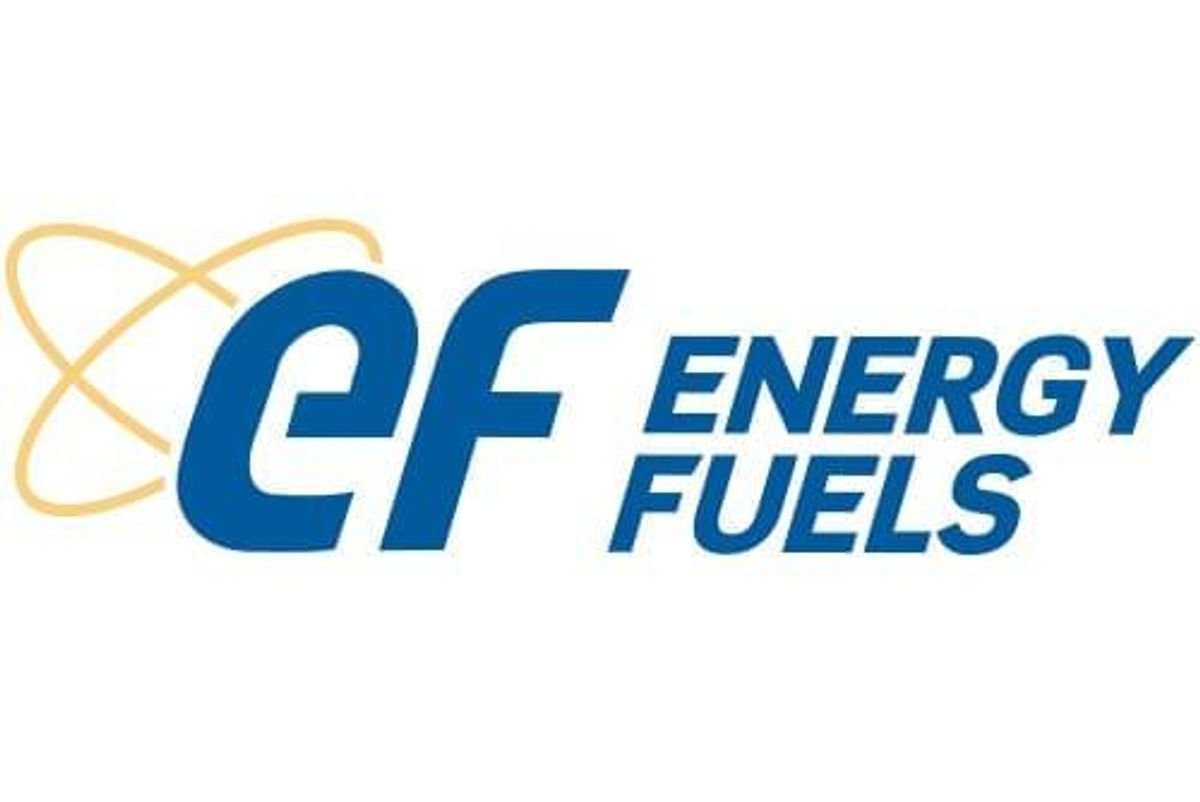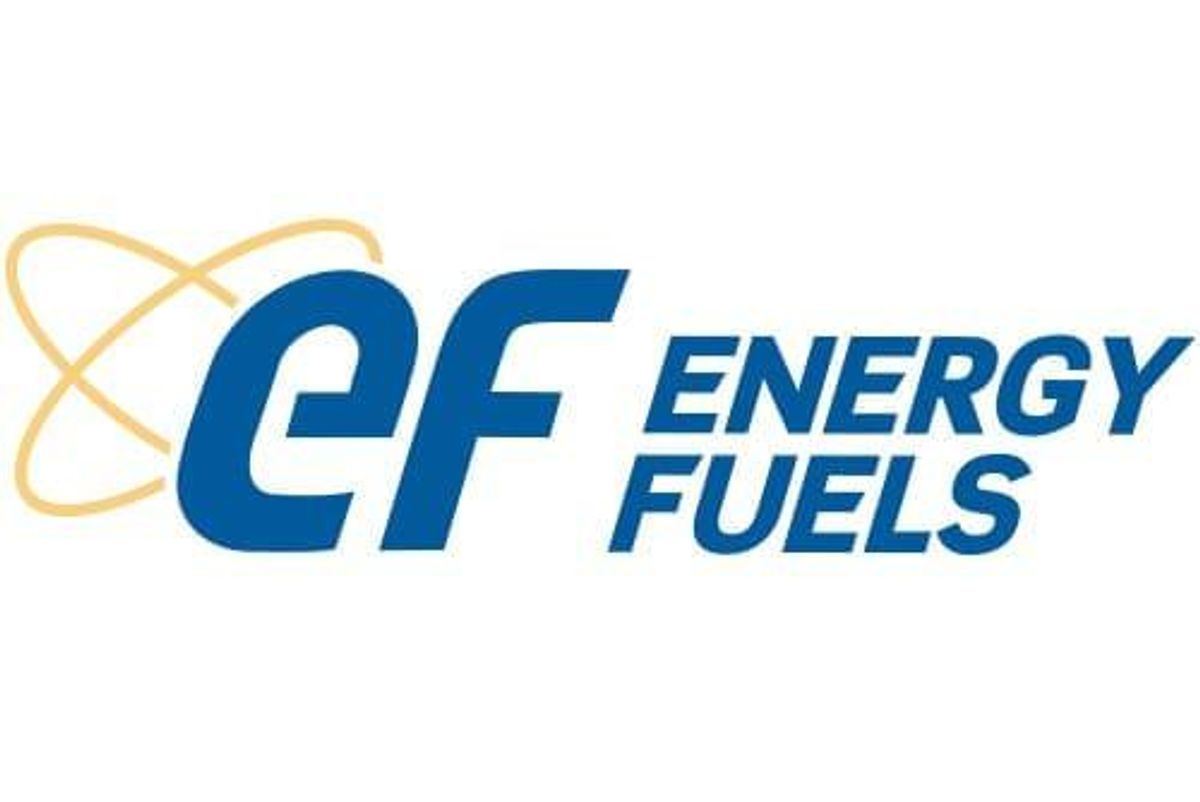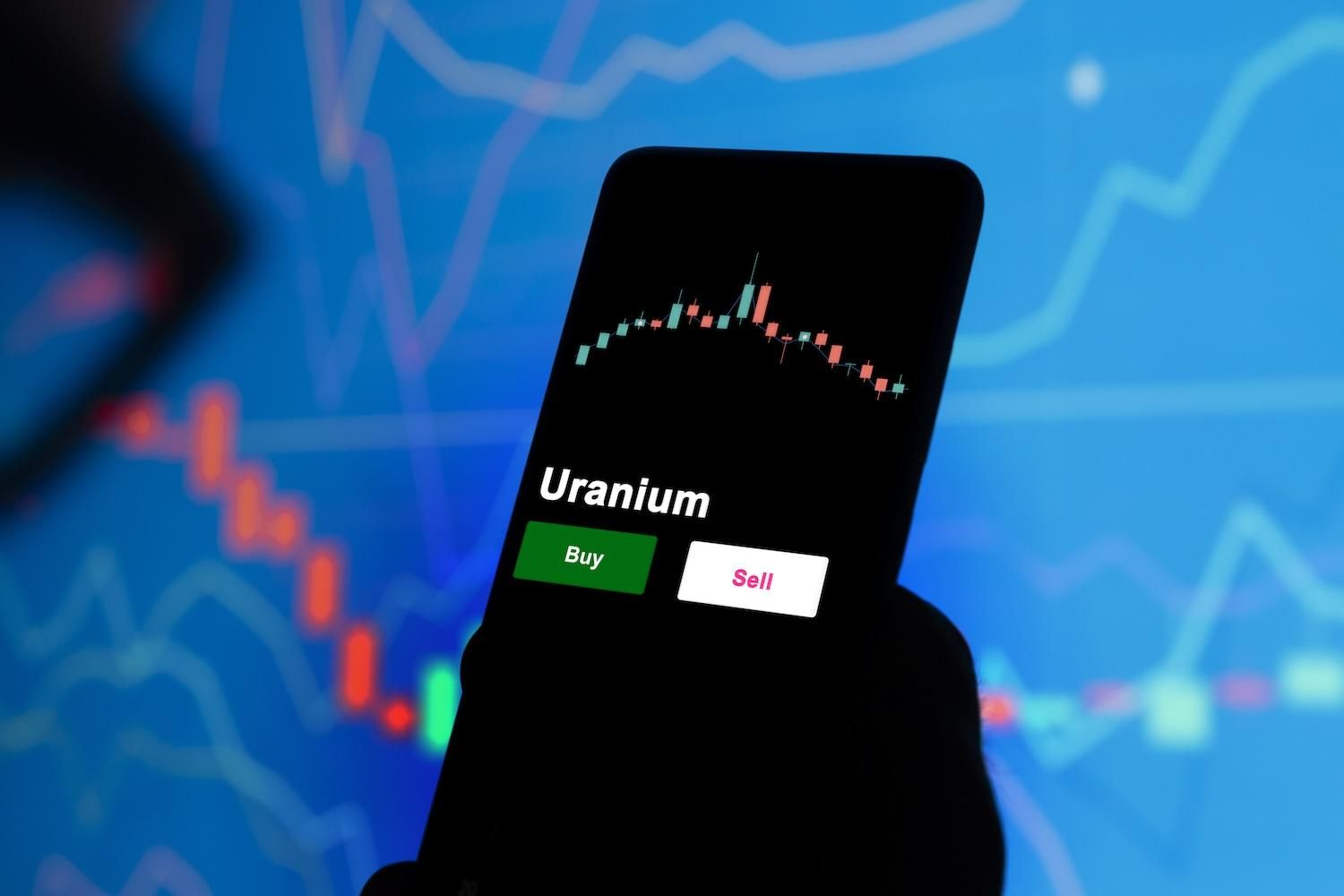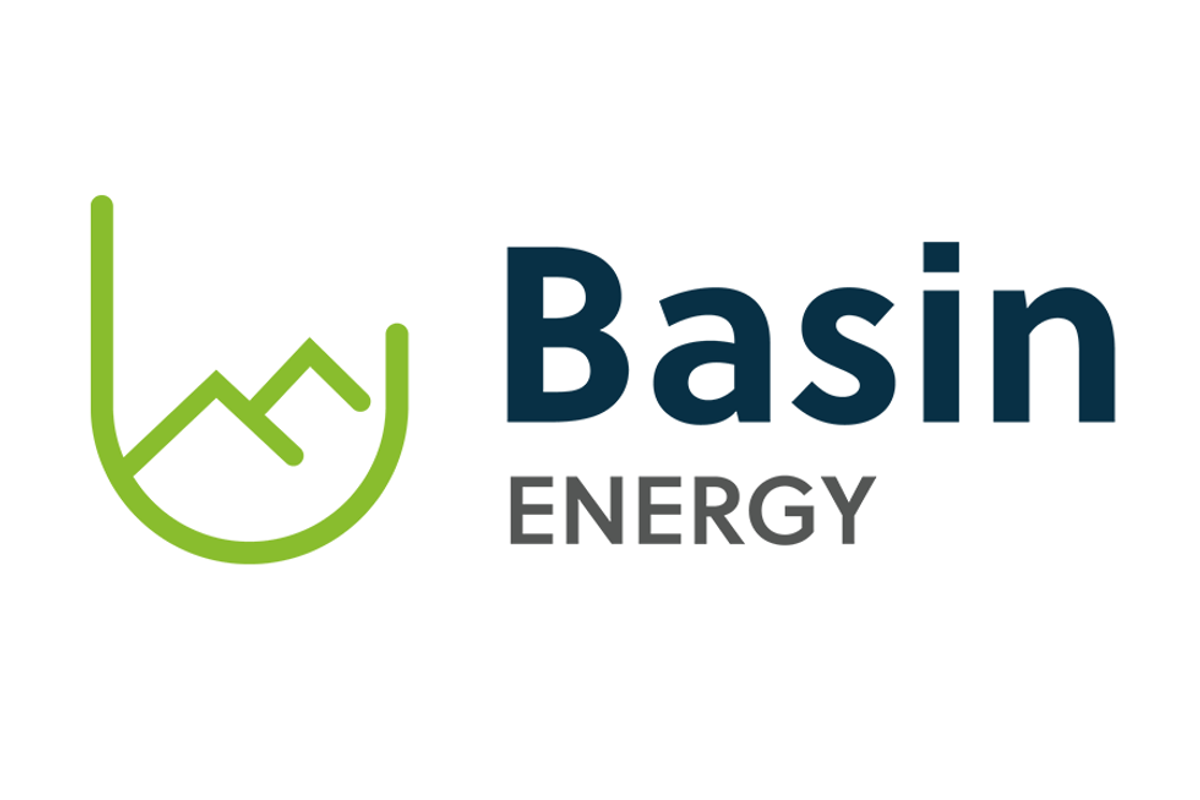
November 28, 2024
Energy Fuels Inc. (NYSE American: UUUU) (TSX: EFR) ("Energy Fuels" or the "Company"), a leading U.S. producer of uranium, rare earth elements ("REEs"), and critical minerals, is pleased to announce that today the Madagascar Council of Ministers, as Chaired by the President of the Republic of Madagascar, has lifted the suspension (the "Suspension") of the Company's 100%-owned Toliara critical minerals project (the "Toliara Project"). The Suspension was imposed by the Government in November 2019. In October 2024, Energy Fuels acquired Base Resources and the Toliara Project.
Mark S. Chalmers, President and CEO of Energy Fuels stated:
"The lifting of the suspension by the Malagasy Government is a very significant step in the development of the Toliara rare earths, titanium, and zirconium project. The Company can now re-commence development and other technical activities on the ground, which are expected to include the re-establishment of the Company's social programs, additional mine planning and engineering, expanding the critical mineral resource base, as well as progressing any other legal activities necessary to progress the Toliara Project and achieve a positive financial investment decision.
"Having closely evaluated countless mining projects around the world during my 45-year career, I believe the Toliara Project is truly a 'generational' mining project, having the potential to provide the U.S. and the rest of the world with large quantities of critical minerals for many decades, including rare earth elements which we plan to process at our existing facility in the U.S.
"We also believe the Toliara Project has the strong potential to be a 'crown jewel' of Madagascar's future economy, a leader in the global clean energy transition, and a model for sustainable mining in Africa, harnessing the principles and practices established and refined by Base Resources over 11 years operating the Kwale titanium and zirconium operation in Kenya. Energy Fuels acquired Base Resources this past October, including its well-regarded management and operations team which remains in place.
"We look forward to growing our partnership with the Government of Madagascar as we formalize the fiscal and other terms applicable to the project, move forward with development activities, and rapidly progress Toliara towards operation for the benefit of our host communities, the nation of Madagascar, and our shareholders."
Lifting the Suspension
The Toliara Project currently holds a mining permit that allows production of titanium and zirconium minerals, including ilmenite, rutile and zircon. In 2019, development activities at the Project were suspended by the Government of Madagascar, pending negotiation of fiscal and other terms applicable to the Toliara Project.
Now that the Government has lifted the suspension, the Company can recommence development and investment in the Project, re-establish community and social programs, and advance the technical, environmental and social activities necessary to achieve a positive Financial Investment Decision ("FID"), which the Company expects to make in early 2026.
While the Project is progressing towards a FID, the Company will continue working with the Government of Madagascar to formalize the fiscal, stability and other terms applicable to the project, including the addition of rare-earth element production to the existing mining permit, through a memorandum of understanding, an investment agreement, amendments to existing laws and other mechanisms as appropriate.
ABOUT ENERGY FUELS
Energy Fuels is a leading US-based critical minerals company, focused on uranium, REEs, heavy mineral sands ("HMS"), vanadium and medical isotopes. The Company has been the leading U.S. producer of natural uranium concentrate for the past several years, which is sold to nuclear utilities that process it further for the production of carbon-free nuclear energy and owns and operates several conventional and in situ recovery uranium projects in the western United States. The Company also owns the White Mesa Mill in Utah, which is the only fully licensed and operating conventional uranium processing facility in the United States. At the Mill, the Company also produces advanced REE products, vanadium oxide (when market conditions warrant), and is preparing to begin pilot-scale recovery of certain medical isotopes from existing uranium process streams needed for emerging cancer treatments. The Company also owns the operating Kwale HMS project in Kenya which is nearing the end of its life and is developing three (3) additional HMS projects, including the Toliara Project in Madagascar, the Bahia Project in Brazil, and the Donald Project in Australia in which the Company has the right to earn up to a 49% interest in a joint venture with Astron Corporation Limited. The Company is based in Lakewood, Colorado, near Denver, with its heavy mineral sands operations primarily managed from Perth, Australia. The primary trading market for Energy Fuels' common shares is the NYSE American under the trading symbol "UUUU," and the Company's common shares are also listed on the Toronto Stock Exchange under the trading symbol "EFR." For more information on all we do, please visit http://www.energyfuels.com
CAUTIONARY STATEMENT REGARDING FORWARD-LOOKING STATEMENTS
Cautionary Note Regarding Forward-Looking Statements
This news release contains certain "Forward Looking Information" and "Forward Looking Statements" within the meaning of applicable United States and Canadian securities legislation, which may include, but are not limited to, statements with respect to: any expectation that the Company will maintain its position as a leading U.S.-based uranium and critical minerals company or as the leading producer of uranium in the U.S.; any expectation that the Company will re-commence development activities on the ground, re-establish the Company's community programs or progress the other activities necessary to achieve a positive FID for the Toliara Project; any expectation that the Toliara Project is a 'generational' critical minerals project or that it has the potential to provide the U.S. and the rest of the world with large quantities of titanium, zirconium, REEs and other materials for decades or at all; any expectation that the Toliara Project has the strong potential to be a 'crown jewel' of Madagascar's future economy, a leader in the global clean energy transition or a model for sustainable mining in Africa, or that it will adopt the proven approaches from the Company's Kwale Operation in Kenya; any expectation that the Company will continue working with the Government of Madagascar to formalize fiscal and other terms applicable to the project through a memorandum of understanding, an investment agreement, amendments to existing laws and other mechanisms as appropriate; any expectation that rare-earth element production will be added to the existing mining permit; any expectation that the financial and legal stability of the Toliara Project will be maintained; any expectation that a positive FID will be made for the Toliara Project and the timing of any such positive FID; and any expectation that the Toliara Project will be developed. Generally, these forward-looking statements can be identified by the use of forward-looking terminology such as "plans", "expects," "does not expect," "is expected," "is likely," "budgets," "scheduled," "estimates," "forecasts," "intends," "anticipates," "does not anticipate," or "believes," or variations of such words and phrases, or state that certain actions, events or results "may," "could," "would," "might" or "will be taken," "occur," "be achieved" or "have the potential to." All statements, other than statements of historical fact, herein are considered to be forward-looking statements. Forward-looking statements involve known and unknown risks, uncertainties and other factors which may cause the actual results, performance or achievements of the Company to be materially different from any future results, performance or achievements express or implied by the forward-looking statements. Factors that could cause actual results to differ materially from those anticipated in these forward-looking statements include risks associated with: commodity prices and price fluctuations; engineering, construction, processing and mining difficulties, upsets and delays; permitting and licensing requirements and delays; changes to regulatory requirements; legal challenges; competition from other producers; public opinion; government and political actions; the failure of the Company to provide or obtain the necessary financing required to develop the Project; market factors, including future demand for REEs; and the other factors described under the caption "Risk Factors" in the Company's most recently filed Annual Report on Form 10-K, which is available for review on EDGAR at www.sec.gov/edgar.shtml, on SEDAR at www.sedar.com, and on the Company's website at www.energyfuels.com. Forward-looking statements contained herein are made as of the date of this news release, and the Company disclaims, other than as required by law, any obligation to update any forward-looking statements whether as a result of new information, results, future events, circumstances, or if management's estimates or opinions should change, or otherwise. There can be no assurance that forward-looking statements will prove to be accurate, as actual results and future events could differ materially from those anticipated in such statements. Accordingly, the reader is cautioned not to place undue reliance on forward-looking statements. The Company assumes no obligation to update the information in this communication, except as otherwise required by law.
nysemkt:uuuutsx:efrvanadium investinguranium investinguranium miningvanadium stocksvanadium explorationuranium explorationvanadium mininguranium stocks
UUUU
The Conversation (0)
29 May 2024
Energy Fuels
America’s Leading Producer of Critical Materials for the Clean Energy Transition
America’s Leading Producer of Critical Materials for the Clean Energy Transition Keep Reading...
23 May
Precious Metals & Critical Minerals Hybrid Investor Conference: Presentations Now Available for Online Viewing
Virtual Investor Conferences, the leading proprietary investor conference series, today announced the presentations from Precious Metals & Critical Minerals Hybrid Virtual Investor Conference held May 22 nd are now available for online viewing. VIEW PRESENTATIONS HERE The company presentations... Keep Reading...
16 May
Precious Metals & Critical Minerals Hybrid Investor Conference Agenda Announced for May 22nd
Virtual Investor Conferences, the leading proprietary investor conference series, today announced the agenda for the Precious Metals & Critical Minerals Hybrid Virtual Investor Conference. Individual investors, institutional investors, advisors, and analysts are invited to attend. This in-person... Keep Reading...
14 April
Western Uranium & Vanadium Corp. Announces Ore Purchase Agreement
Western Uranium & Vanadium Corp. (CSE: WUC) (OTCQX: WSTRF) (" Western " or the " Company ") is pleased to announce that the Company has entered into an Ore Purchase Agreement ("Agreement") with Energy Fuels Inc. (NYSE American: UUUU) (TSX:EFR). Western plans to commence hauling around the... Keep Reading...
05 December 2024
Energy Fuels and Madagascar Government Execute Memorandum of Understanding to Further Advance Toliara Critical Mineral Project in Madagascar
Energy Fuels Inc. (NYSE American: UUUU) (TSX: EFR) ("Energy Fuels" or the "Company"), a leading U.S. producer of uranium, rare earth elements ("REE"), and critical minerals, is pleased to announce that it has entered into a Memorandum of Understanding (the "MOU") with the Government of... Keep Reading...
05 December 2024
Energy Fuels and Madagascar Government Execute Memorandum of Understanding to Further Advance Toliara Critical Mineral Project in Madagascar
Energy Fuels Inc. (NYSE American: UUUU) (TSX: EFR) (" Energy Fuels " or the " Company "), a leading U.S. producer of uranium, rare earth elements (" REE "), and critical minerals, is pleased to announce that it has entered into a Memorandum of Understanding (the " MOU ") with the Government of... Keep Reading...
09 December
Uranium Price 2025 Year-End Review
After 2024’s rapid rise, the U3O8 spot price remained more constrained through 2025, fluctuating between a relatively short range of US$63.17 (March 13) and US$83.33 (September 25) per pound. Entering the year, the price was sitting at US$74.56 before economic and geopolitical uncertainty pushed... Keep Reading...
08 December
American Uranium Eyes Resource, Scoping Study Update in 2026
American Uranium (ASX:AMU) is advancing drilling at its Lo Herma project in Wyoming, with work continuing into the winter season, according to Executive Director Bruce Lane in an interview with the Investing News Network. The company is currently awaiting results from recent hydrogeological... Keep Reading...
04 December
China’s Sole Uranium Miner Soars in Market Debut
China National Uranium (SZSE:001280) more than tripled in value during its first day of trading in Shenzhen, raising about 4 billion yuan (US$570 million) in its Wednesday (December 3) debut.According to an exchange filing cited by Bloomberg, the state-backed miner priced 248 million shares at... Keep Reading...
02 December
Niger Moves to Sell Uranium from Orano's Seized SOMAÏR Mine
Niger’s military government announced on Sunday (November 30) that it intends to put uranium produced by the SOMAÏR mine on the international market.General Abdourahamane Tiani, head of the junta, told state television that “Niger's legitimate right to dispose of its natural riches to sell them... Keep Reading...
30 November
Expands REE and Uranium Footprint at Sybella-Barkly
Basin Energy (BSN:AU) has announced Expands REE and uranium footprint at Sybella-BarklyDownload the PDF here. Keep Reading...
28 November
Orano Condemns Illegal Uranium Transfer from Niger Mine
Orano said it “strongly condemns” the removal of uranium from the SOMAÏR mine in Northern Niger.The French firm called the transfer illegal and a direct breach of the International Center for Settlement of Investment Disputes’ (ICSID) September ruling, which prohibits the material's sale or... Keep Reading...
Latest News
Latest Press Releases
Related News
TOP STOCKS
American Battery4.030.24
Aion Therapeutic0.10-0.01
Cybin Corp2.140.00








